- Author Matthew Elmers [email protected].
- Public 2023-12-16 21:49.
- Last modified 2025-01-24 09:17.

"I see that fashion wears out more clothes than people do."
Shakespeare William
History of countries and peoples. In our materials on VO, we paid a lot of attention to the armor of the Tudor era, in particular, the armor of the same Henry VIII. But the whole life of that era remained outside the topic, in fact. Although, on the other hand, no articles will be enough to display it in its entirety. This requires a voluminous book the size of a doctoral dissertation. But why not highlight some interesting "moments"? Especially if they are to some extent related to our military themes. Today we will get acquainted with some of the legally approved rules of life under this monarch, which are very instructive in their own way. And, of course, women who read our materials on VO will always be interested to learn about clothing, and above all women's clothing, which at the time of Henry VIII was closely connected with … horse breeding in the interests of the knightly cavalry. So…
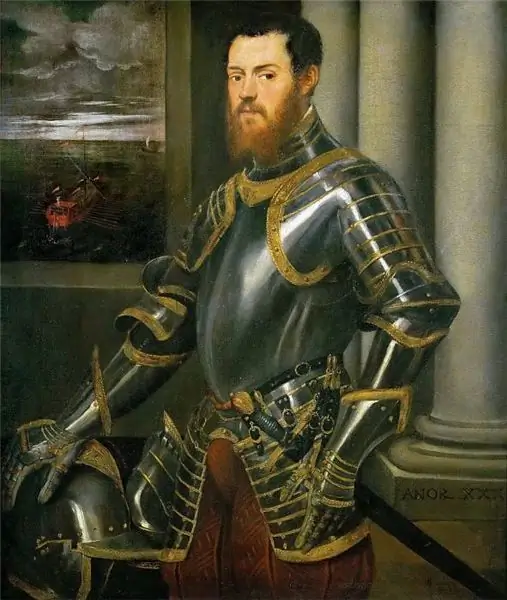
To begin with, on May 6, 1562, Queen Elizabeth, based on the rules of 1557, proclaimed that on pain of alienation of property, imprisonment and a fine, no one below the rank of knight is allowed to wear gilded spurs or a sword covered with gold notching or gilding. rapier or dagger. In addition, it was strictly forbidden for everyone to carry a sword, rapier, or other weapon in excess of one yard in length and half a quarter in the blade at the most; and some other dagger over 12 inches long in the blade: and some other small with a sharp spike, or another blade over two inches long (115, 31 and 5 cm, respectively). The punishment for the disobedient was the same confiscation of property, taking into custody and fines. The officers were ordered to chop off blades exceeding the length allowed, and for such purposes could occupy posts near the city gates. In 1580, the gallant campaigners nearly provoked a diplomatic scandal when they stopped the French ambassador at Smithfield, angering the queen a lot.
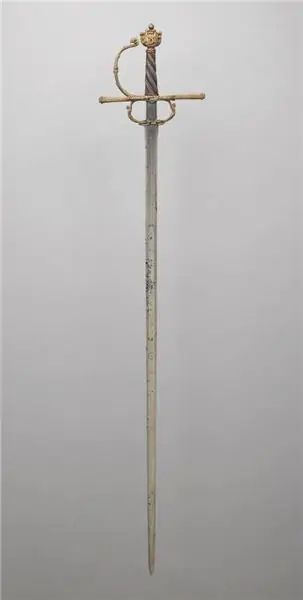
But the "one and a half-handed" or "bastard" sword remained in use as before. Moreover, in the times described, even even longer weapons began to appear and are increasingly used, in particular, the terrifying-looking two-handed swords, which have already been described here on the pages of VO.
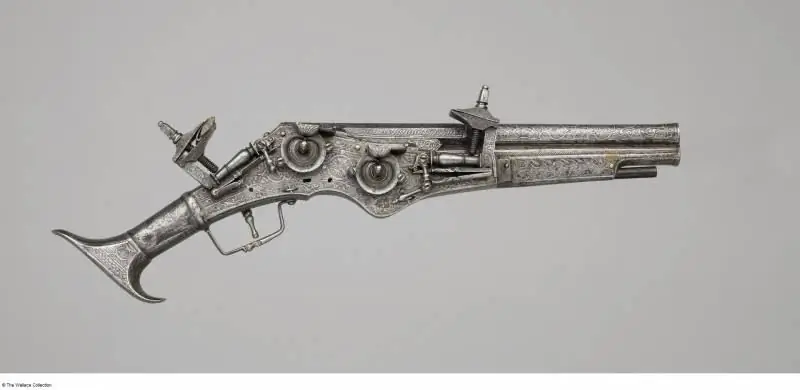
But the horseman and the war hammer came into use. Moreover, he was increasingly supplied with a metal shaft, so that the enemy did not cut him with his sword. On the butt of the working part in the form of a hammer, a point with a diamond-shaped section was placed. Maces have become less common, and those that come across have an "apple" with triangular or curved flanges, that is, these are already six-pins.
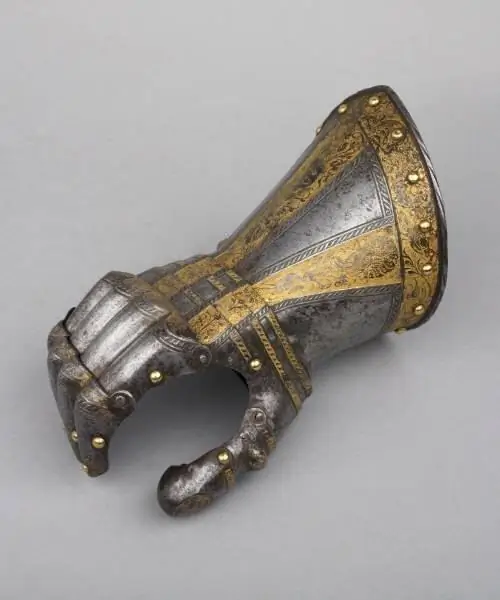
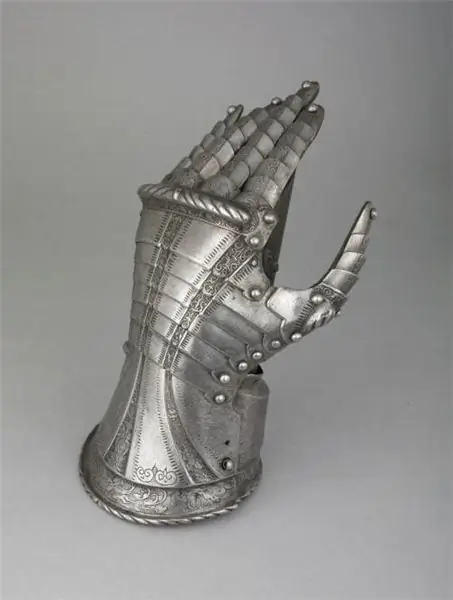
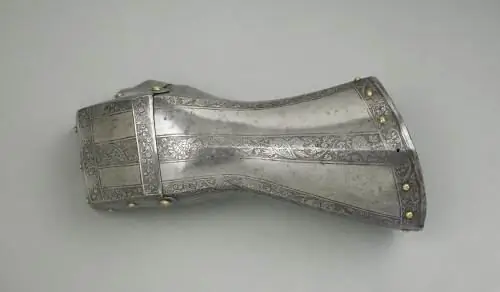
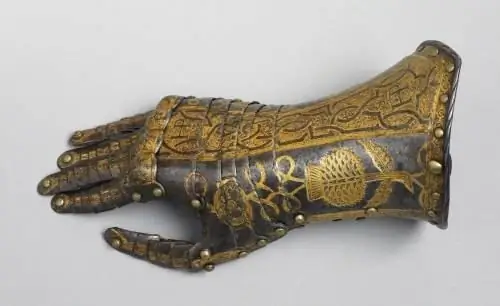
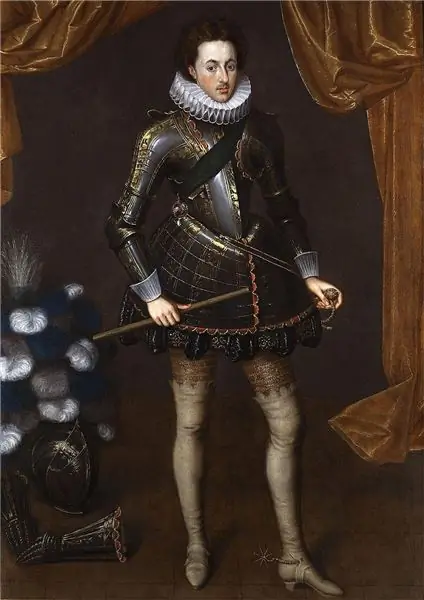
The richer designs were decorated with, say, a silver or gold notch on a blued or reddish-brown surface.
The main weapon for the equestrian nobility now began to serve as pistols with a wheel lock. The biggest advantage of the wheel lock was the ability to cock it in advance and prepare the pistol for use in order to reach and discharge it at the enemy at a convenient moment. For military needs, a pair of pistols was usually used, retractable into leather holsters hanging from a saddle bow. However, a "husband with a position" used this kind of weapon only if he served as a cavalry captain, since the weapon was not cheap. An alternative version was "snaphans" - a shock-flint spring lock, in which a piece of flint struck a steel flint plate on a hinge. Snaphands were cheaper than a wheel lock, which also had a big drawback in the form of rotating parts in its design, which made it difficult to service in the field, especially if some parts broke from excessive rough handling. Interestingly, at first, the British did not accept the idea of a cartridge in which a previously prepared measure of gunpowder and a bullet were combined in one paper package, although it appeared already in the middle of the century and began to spread confidently on the mainland of Europe.

Innovative combined versions of weapons also emerged, like a sword with a small pistol in the handle or a war hammer for the rider, connected to a pistol that fired through the handle, equipped with a wheel lock.

It was under Henry that many decrees and decrees were issued on the regulation of the use of luxury goods, which were adopted to legislatively consolidate the division of society into strata, expressed in the appearance of its members, including through the quality of the clothes they wear. For example, Henry VIII issued the following version of the law:
“No one should wear … (clothes of) gilded or silver cloth, or purple silk … except … Earls. All above this rank and the knights of the king (and only in their cloaks). No one should wear … (clothes made of) gilded or silver cloth, satin with sequins, silk, cloth mixed or embroidered with gold or silver or foreign cloth … except … barons, all above this rank, Knights of the Garter and (assessors) of the Privy Council. No one should wear … (in clothes) a cord of gold or silver, a cord mixed with gold or silver, of silk, (as well as) spurs, swords, rapiers, daggers, buckles or clasps with gold, silver or gilding … except … sons of barons, all above this rank, nobles in the entourage of the queen, knights and captains. No one should wear … velvet in raincoats … capes, cotta or outer garments, or embroidery with silk, or silk pantaloons … except … knights, all above this rank and their heirs with legal rights. No one should wear … velvet, satin, damascus, taffeta or (similar) fabric with a pattern in cloaks, capes, cotta or outerwear, go velvet in jackets, pantaloons or doublets … except … the eldest sons of knights and all above this title."
That is, those in power have always been fond of prohibition. Here are just a little succeeded. And each next simplification in clothes was replaced by wild extravagance …
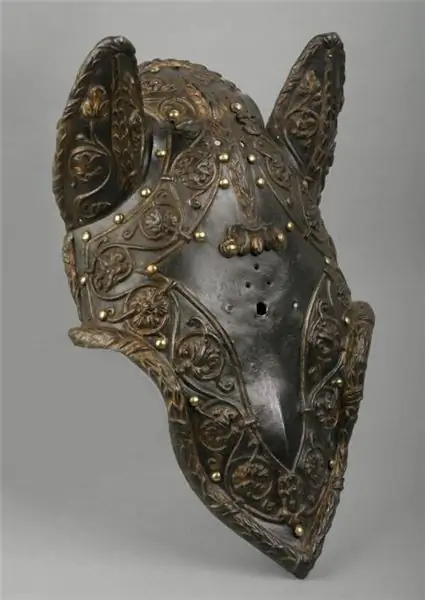
As early as 1495, Henry VII prohibited the sale of good horses abroad, accusing the York Party of squandering the horse fund and the resulting shortage of horses. At the dawn of the 16th century, horse breeders used the same techniques as their ancestors in previous centuries: hardy stallions with a broad chest, strong muscles and strong necks, although still quite clumsy, were considered the best. Such animals did not seem particularly large by today's standards: it is enough to look closely at the armor made around 1515 for the horse of Henry VIII to understand that the king's horse was not larger than a hunter. In an effort to raise his own prestige and importance, especially in the eyes of foreign sovereigns, Henry VIII sent emissaries to search and purchase horses in Italy. For the "Field of Golden Brocade" in 1520, Henry chose a Neapolitan horse, but in his stables there was also a Frisian from the Duke of Mantua, a thoroughbred horse raised by the breeders of Isabella, Duchess of Milan, a horse from the Duke of Ferrara and 25 (!) Selected Spanish horses from Emperor Charles V.
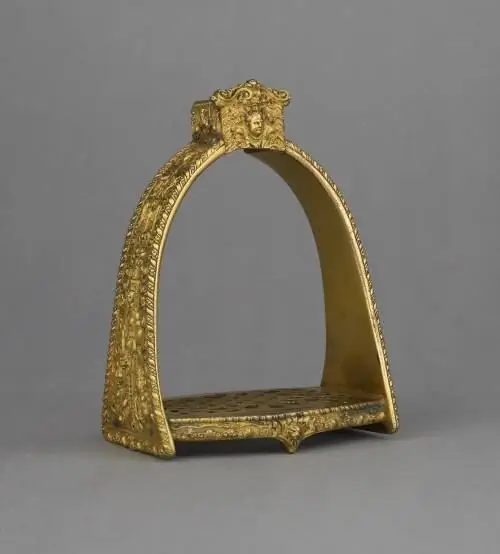
Decrees were issued that compelled any owner of a closed park to have two mares in it, each at least 13 palms at the withers (1535), forbidding stallions less than 15 palms and more than two years old to interfere in places where mares were kept (1540),and demanded from the nobility to adhere to special quotas for horses (1541-1542).
Moreover, the last acts also concerned archbishops and dukes (seven trotting horses under the saddle, each at least three years old and 14 palms at the withers); marquises, earls and bishops with an income of £ 1,000 or more (five such trotters); viscounts and barons with an income of 1000 pounds (three trotters); and all with an income of 500 marks (two trotters). Any citizen of the crown with an annual income of 100 pounds, whose wife wore a silk outer dress or a French hood, or a velvet hat, "", was also obliged to maintain one racehorse horse. Members of the "Pensioners' Gentlemen" Guards, created by Henry, were also supposed to breed horses, and many received parks for this purpose, which had been taken away from monasteries. Sir Nicholas Arnold received one such allotment in Heinem, taken from the monastery in Gloucester, where the Neapolitan war horses and horses from Flanders were kept. Keeping horses was not cheap, not least because of the construction of fences and walls, as well as gates to separate the animals, so that only the most selected stallions could cover the mares.
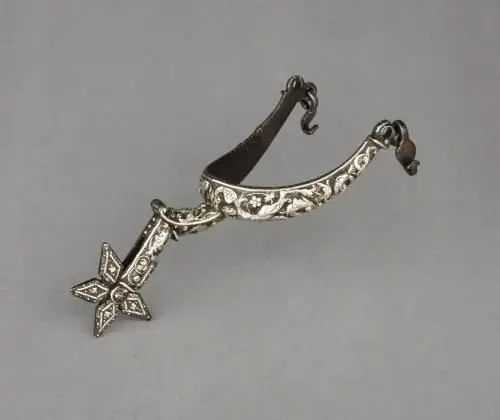
Several royal "Pensioners" even wrote treatises on horse breeding and dressage, and developed in them the experience of their Italian colleagues, and above all the recommendations set forth in "Hippicus and Hipparchus" of ancient Xenophon. And again, as in the case of armor, the British considered it not at all shameful for themselves to learn from foreigners and invite them to serve. Thus, Robert Dudley, Earl of Dester, being a royal equerry (1558-1881), ordered himself a groom from Pavia, Claudio Corte, and another "Pensioner", Sir Thomas Bidingfield, translated the work he had written into English. Federigo Grisone published a book on the art of riding in Naples in 1550. The book was translated in England with the appropriate title - "Rules of Horsemanship" - and presented to Dudley. But … in spite of all these efforts, the quality of the horse stock was declining all the time. So Elizabeth again had to struggle with the low level of horse breeding and issue appropriate decrees.
Gradually, attention was gained by a new trend of creating for military needs not only and not so much a powerful, but a very mobile and flexible horse. However, in the 16th century, such an animal would by no means shake the position of a traditional war horse capable of carrying a rider in full armor, especially in tournaments. More attention began to be paid to various movements, such as the croup, when the horse reared up and jumped up, while thrashing with its front legs. The art of dressage began to develop. And also in England, veterinary medicine began to develop, largely due to the curiosity of Christopher Clifford, an illiterate groom in the service of noble gentlemen, who wrote (although, most likely, presumably, with someone's help) the book "The Schoole of Horsemanship" (Skoda Riding), published in 1585. By the end of the century, Arabian, Berber horses or "ginetas" - short Spanish horses - were increasingly used by horse breeders in Europe to obtain graceful, but at the same time fast and strong horses. That is, there were no knights, and horses in England gradually became completely different, not the same as before. The monarchs did not understand this, but … progress could not be stopped.
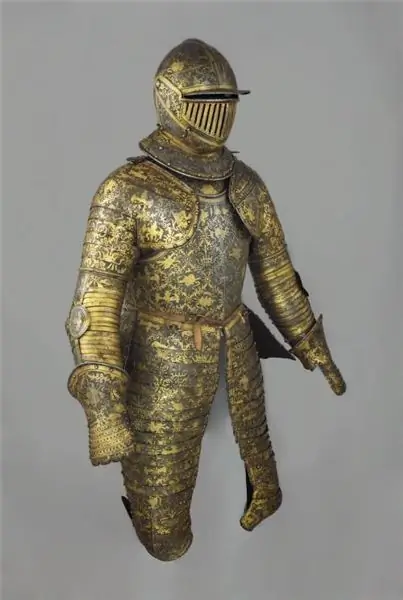
It is often thought that the invention of firearms quickly put an end to the armored knights. But this is not at all the case. Firearms and full plate armor coexisted on the battlefield for over two hundred years, from the 15th to the 17th centuries. And the riders in armor in the 17th century themselves, although they were armed with firearms, usually a pair of large pistols and a long-barreled gun called a carbine, were not inferior to the knights in terms of the weight of the armor. This beautiful gilded armor in our photo, made between 1620 and 1635 in Northern Italy, probably for a high-ranking member of the ruling House of Savoy, a region in the border region between southern France in the west and Italy and Switzerland in the east, just belonged to equestrian cuirassier armor. Their entire surface is richly decorated with an etched grid of diamond-shaped panels formed by Savoyard knots, depicting trophies, crowns and palm branches, as well as a pair of interlocking hands, all gilded against a common dark granular background. Hands folded together with the image of the "fire of friendship" are also depicted on them and on the elbow wings.
We call these riders cuirassiers. But in England, cuirassiers were sometimes called "lobsters", due to the use of hip plates in their armor, which overlapped one another, which made a person in armor something like a large cancer, at least in the eyes of the soldiers of the 17th century, for whom full armor was already something of a curiosity.






